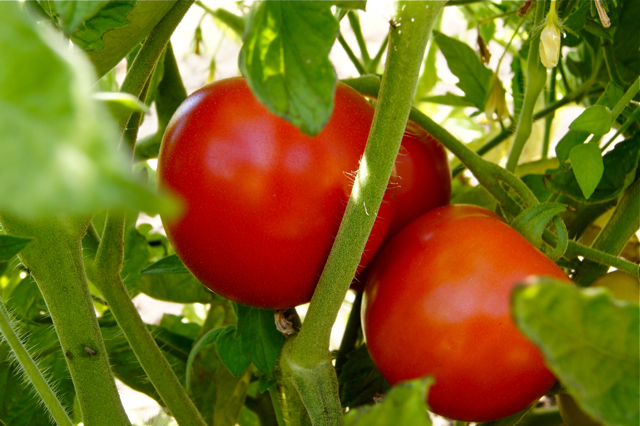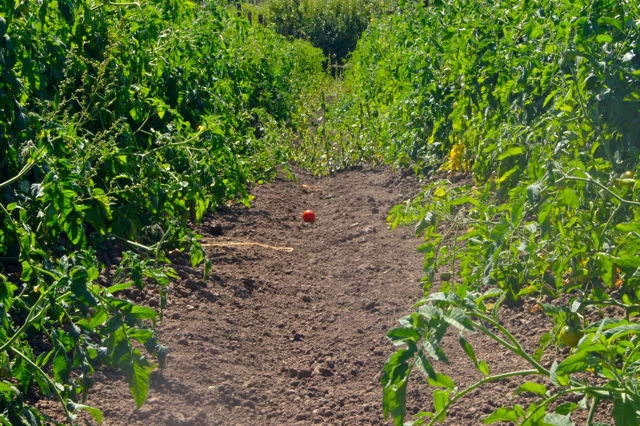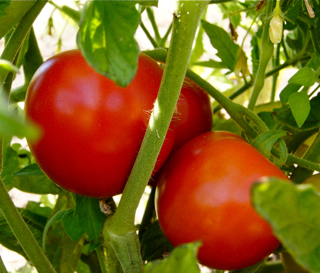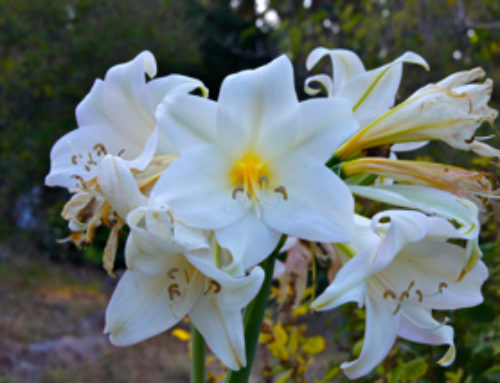The waiting is over, our dry-farmed tomatoes will be in everyone’s share this week, about 2 weeks earlier than last year. If only we could dry-farm more of our crops we might not be so worried about water shortages during this current drought cycle.

Before the rise of dams and aquifer pumping, much of the American West practiced dry-farming. Today only a handful of perennial crops such as Olives, Grapes, and Apples are still dry-farmed on a limited scale. Along some favorable coastal microclimates farms like ours dry-farm tomatoes, potatoes, and sometimes winter squash. What’s special about dry farming is the ability to grow a crop by only utilizing the residual moisture in the soil accumulated during the rainy season.
This year the first field of Early Girl tomatoes was planted just before the last rains of the season fell back in March. Since then, 4 months now, no additional water has been applied to the crop. Key to dry farming successfully is to prevent soil moisture evaporation. This is done by tilling the surface of the soil, creating a layer of dry mulch that effectively traps moisture in the clay-rich subsoil.

The “Early Girl” is the tomato variety of choice for dry farming. It has a vigorous rootsystem that can tap deep into the subsoil.Dry-farming tomatoes is a technique perfected a couple of decades ago by Molino Creek, a farming cooperative situated in the coastal hills above Davenport in northern Santa Cruz County. We are fortunate to enjoy a similar microclimate here in the foothills of the Santa Cruz Mountains in the southern part of the county. Under optimum conditions the plants, although stressed from a lack of water, will stay healthy enough to yield tomatoes bursting with flavor.
Although Early Girl’s were bred in France, tomatoes find their origin in the jungles of Central and South America. The Mayans called it “xtomatl” hence the name tomato. When the Spanish brought the first tomato to Europe the Church condemned eating tomatoes as a scandalous and sinful indulgence. The French on the other hand admired its sensuous appearance and were enticed by it, believing that the red fruit had aphrodisiac powers, and so called it “pomme d’amour” or love apple. Today, we probably couldn’t imagine anything more scandalous than not having tomatoes as part of our diet.






